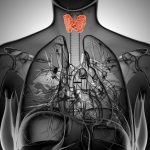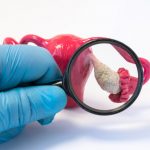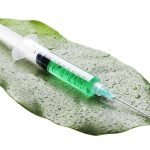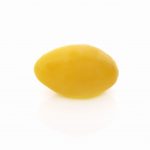Graphene May be the Next Big Thing in Water Purification
Node Smith, ND
For those who are unfamiliar with graphene, it is the world’s strongest man-made material, and occupies a space that is only one atom thick. Oh, and its transparent, which may be redundant, since its only one atom thick. It was developed in 2004, and has been slow to really enter into common use, though its projected applications are virtually limitless, from tech, to medical, to industrial, it’s likely that graphene will be part of a new wave of innovative solutions to impact our world in the near future. One of these applications may have to do with water purification.
Graphene and water purification
Scientists from the National University of Science and Technology “MISIS” together with their colleagues from Derzhavin Tambov State University and Saratov Chernyshevsky State University have figured out that graphene is capable of purifying water, making it drinkable, without further chlorination. “Capturing” bacterial cells, it forms flakes that can be easily extracted from the water. Graphene separated by ultrasound can be reused. The article on the research is published in Materials Science & Engineering C.
Graphene and graphene oxide
Graphene and graphene oxide (a more stable version of the material in colloidal solutions) are carbon nanostructures that are extremely promising for Biomedicine. For example, it can be used for targeted drug delivery on graphene “scales” and for tumor imaging. Another interesting property of graphene and graphene oxide is the ability to destroy bacterial cells, even without the additional use of antibiotic drugs.
Scientists conducted experiment injecting graphene oxide into solutions containing E.coli
Scientists from the National University of Science and Technology “MISIS” together with their colleagues from Derzhavin Tambov State University and Saratov Chernyshevsky State University have conducted an experiment, injecting graphene oxide into solutions (nutrient medium and the saline) containing E.coli. Under the terms of the experiment, saline “simulated” water, and the nutrient medium simulated human body medium. The results showed that the graphene oxide along with the living and the destroyed bacteria form flakes inside the solutions. The resulting mass can be easily extracted, making water almost completely free of bacteria. If the extracted mass is then treated with ultrasound, graphene can be separated and reused.
“As working solutions, we chose a nutrient medium for the cultivation of bacteria (it is to the natural habitat of bacteria), as well as ordinary saline, which is used for injections. As a tested bacterial culture, E. coli modified with a luminescent agent was used to facilitate visualization of the experiments, was used”, Aleksandr Gusev, one of the authors, Associate Professor of NUST MISIS Department of Functional Nanosystems and High-Temperature Materials, comments.
Graphene oxide added to the nutrient solution in different concentrations
Graphene oxide was added to the nutrient solution in different concentrations — 0.0025 g/l, 0, 025 g/l, 0.25 g/l and 2.5 g/l. As it turned out, even at a minimum concentration of graphene oxide in saline (water), the observed antibacterial effect was significantly higher than in the nutrient medium (human body). Scientists believe that this indicates not a mechanical, but a biochemical nature of the mechanism of action, that is, since there are far fewer nutrients in the saline solution, the bacteria moved more actively, and was “captured” by the scales of graphene oxide more often.
According to the fluorescent test data, confirmed by laser confocal microscopy and scanning electron microscopy, at 2.5 g/l concentration of graphene oxide, the number of bacteria decreased several times compared to the control group, and became close to zero.
Researchers believe graphene oxide provokes the formation of free radicals
While it is not yet known exactly how the further destruction of bacteria occurs, researchers believe that graphene oxide provokes the formation of free radicals that are harmful to bacteria.
According to scientists, if such a purification system is used for water, it will be possible to avoid additional chlorination. There are other advantages: decontamination with graphene oxide has a low cost, in addition, this technology is easy to scale to the format of large urban wastewater treatment plants.
From Derzhavin Tambov State University
 Node Smith, ND, is a naturopathic physician in Humboldt, Saskatchewan and associate editor and continuing education director for NDNR. His mission is serving relationships that support the process of transformation, and that ultimately lead to healthier people, businesses and communities. His primary therapeutic tools include counselling, homeopathy, diet and the use of cold water combined with exercise. Node considers health to be a reflection of the relationships a person or a business has with themselves, with God and with those around them. In order to cure disease and to heal, these relationships must be specifically considered. Node has worked intimately with many groups and organizations within the naturopathic profession, and helped found the non-profit, Association for Naturopathic Revitalization (ANR), which works to promote and facilitate experiential education in vitalism.
Node Smith, ND, is a naturopathic physician in Humboldt, Saskatchewan and associate editor and continuing education director for NDNR. His mission is serving relationships that support the process of transformation, and that ultimately lead to healthier people, businesses and communities. His primary therapeutic tools include counselling, homeopathy, diet and the use of cold water combined with exercise. Node considers health to be a reflection of the relationships a person or a business has with themselves, with God and with those around them. In order to cure disease and to heal, these relationships must be specifically considered. Node has worked intimately with many groups and organizations within the naturopathic profession, and helped found the non-profit, Association for Naturopathic Revitalization (ANR), which works to promote and facilitate experiential education in vitalism.
Node Smith graduated from the National University of Natural Medicine (NUNM) in 2017, and is currently licensed as a naturopathic physician in Oregon and working towards becoming licensed in Saskatchewan, Canada as well.










